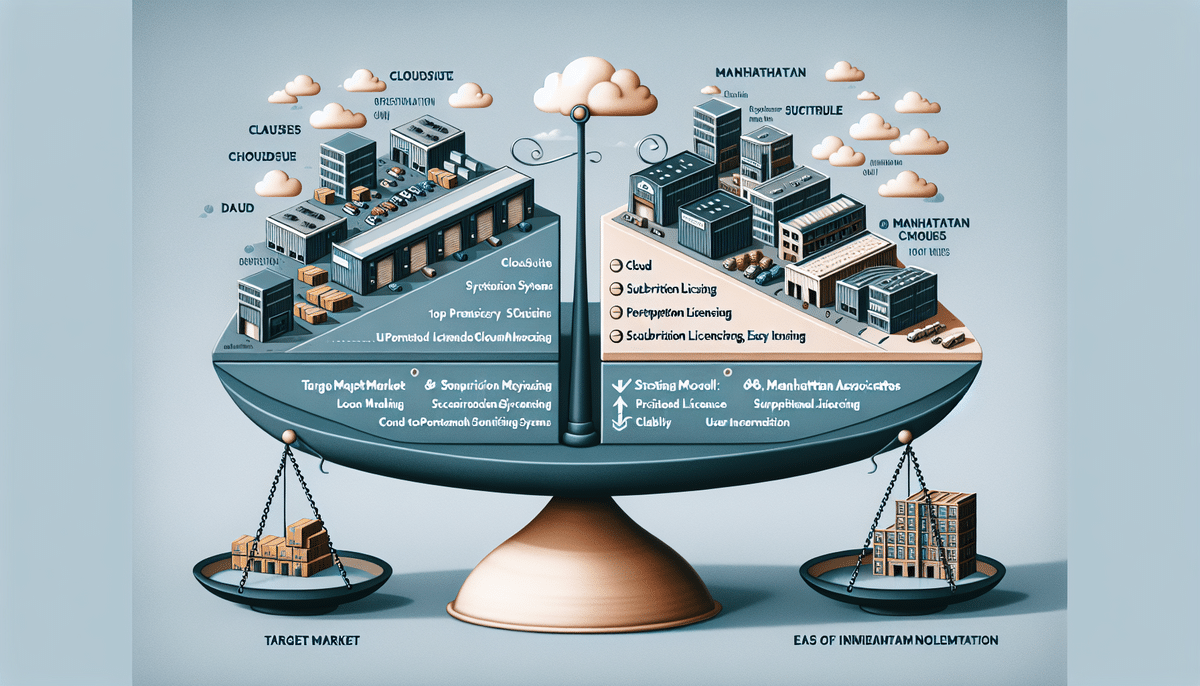If you are running a footwear e-commerce business, then you know the importance of efficient order fulfillment. Managing your warehouse operations can be a daunting task, especially if you don't have the right system in place. This is where warehouse management systems come in to simplify and streamline operational processes in your footwear business. In this article, we will look at the 10 best warehouse management systems for footwear e-commerce businesses that can help you optimize your warehouse efficiency and customer satisfaction.
Introduction to Warehouse Management Systems for Footwear E-Commerce
A warehouse management system (WMS) is a software application that helps businesses automate and optimize their warehouse operations. It enables businesses to manage inventory levels, monitor shipment and delivery status, manage supplier relationships, and even manage product returns. WMS solutions provide real-time data that allows warehouse managers to make informed decisions that can prevent delays and reduce costs. With the right WMS in place, footwear e-commerce businesses can improve their overall efficiency and reduce operational costs.
One of the key benefits of using a WMS for footwear e-commerce businesses is the ability to track and manage inventory levels in real-time. This allows businesses to avoid stockouts and overstocking, which can lead to lost sales and increased costs. Additionally, WMS solutions can help businesses optimize their warehouse layout and pick paths, reducing the time it takes to fulfill orders and improving overall customer satisfaction. By implementing a WMS, footwear e-commerce businesses can streamline their operations and stay competitive in a rapidly evolving industry.
Criteria for Selecting the Best Warehouse Management Systems
Choosing the right WMS for your footwear e-commerce business can make all the difference in your operations. Before making a decision, consider the following factors:
- Scalability: Does the WMS accommodate growth as your business expands?
- Simplicity: Is the software user-friendly and easy to navigate?
- Integration: Can the WMS integrate with other software applications you use?
- Customization: Can the WMS be customized to meet the specific needs of your business?
- Support and training: Does the service provider offer adequate support and training?
Consider these criteria when selecting a WMS for your footwear e-commerce business to ensure that you get the best value for your investment.
Another important factor to consider when selecting a WMS is the level of automation it offers. A highly automated WMS can help streamline your operations, reduce errors, and improve efficiency. Look for features such as automated data capture, real-time inventory tracking, and automated order processing. These features can help you save time and money, and improve customer satisfaction.
Top 5 Open Source Warehouse Management Systems for Footwear E-Commerce
Open source WMS solutions are appealing for their low cost and flexibility. Here are the top five open source WMS options for footwear e-commerce businesses:
- Odoo: A comprehensive open source solution that provides inventory management, supply chain management, and order management capabilities.
- Dolibarr: A free and open source WMS that provides inventory management, supplier management, and purchase order management capabilities.
- ERPNext: An open source solution that provides warehouse management, inventory management, and order management capabilities.
- OpenBoxes: An open source warehousing and inventory management solution that allows users to manage stock movements, inventory levels, and product tracking.
- Magento: A popular e-commerce platform that provides in-built warehouse management and inventory management capabilities.
Open source WMS solutions offer great value and flexibility for small and medium-sized businesses. These solutions can be customized to meet the specific needs of your footwear e-commerce business.
When choosing an open source WMS for your footwear e-commerce business, it's important to consider the level of support and community involvement. Some solutions may have a larger community of developers and users, which can provide more resources and support for your business.
Additionally, it's important to consider the scalability of the WMS solution. As your business grows, you may need a WMS that can handle larger volumes of inventory and orders. Make sure to choose a solution that can grow with your business.
Top 5 Cloud-Based Warehouse Management Systems for Footwear E-Commerce
Cloud-based WMS solutions offer several advantages, including cost-effectiveness, flexibility, and scalability. Here are the top five cloud-based WMS solutions for footwear e-commerce businesses:
- 5Bags: A cloud-based WMS solution that provides inventory management, order management, and shipping management capabilities.
- ShipBob: A cloud-based WMS solution that provides inventory management, order management, and shipping management capabilities.
- TradeGecko: A cloud-based solution that offers inventory management, order management, and shipping management capabilities, as well as integration with e-commerce platforms and accounting software.
- SkuVault: A cloud-based WMS solution that provides inventory management, order management, and shipping management capabilities.
- Fishbowl Inventory: A cloud-based inventory management solution that provides advanced inventory reporting, order management, and warehouse management capabilities.
Cloud-based WMS solutions offer great flexibility and can be easily accessed from anywhere. They also require less hardware investment, making them a great option for small and medium-sized footwear e-commerce businesses.
It is important to note that when selecting a cloud-based WMS solution, footwear e-commerce businesses should consider factors such as the size of their inventory, the number of orders they process, and their shipping requirements. Additionally, some cloud-based WMS solutions offer additional features such as real-time inventory tracking and analytics, which can provide valuable insights into business operations.
Key Features to Look for in a Warehouse Management System for Footwear E-Commerce
The key features to look for in a WMS for footwear e-commerce businesses include:
- Inventory management: This feature allows you to track your inventory levels real-time, including storage, receipt, and dispatch of products.
- Order management: This feature allows you to automate order processing, including order retrieval, order tracking, and order fulfillment.
- Picking and packing: This feature enables you to generate pick lists, optimize picking routes, and monitor packing processes, ensuring timely order fulfillment.
- Shipping management: This feature allows you to automate shipping processes, generate shipping labels, and track shipment status.
- Reporting: This feature allows you to generate reports on inventory levels, order status, and delivery performance, providing insights for business decisions and optimizing your operational processes.
Make sure the WMS you select for your footwear e-commerce business offers these key features to ensure efficient warehouse management and order fulfillment.
In addition to the key features mentioned above, it is important to consider the scalability of the WMS. As your business grows, you will need a system that can handle increased inventory levels and order volumes. Look for a WMS that can easily integrate with other systems, such as your e-commerce platform and accounting software, to streamline your operations.
Another important feature to consider is the ability to customize the WMS to fit your specific business needs. This includes the ability to create custom reports, set up unique workflows, and configure user permissions. A customizable WMS can help you optimize your warehouse operations and improve overall efficiency.
Benefits of Implementing a Warehouse Management System in Your Footwear E-Commerce Business
The major benefits of implementing a WMS in your footwear e-commerce business include:
- Improved inventory management: A WMS allows you to monitor your inventory levels real-time, reducing the risk of overselling or underselling your product.
- Efficient order fulfillment: A WMS automates order processing, picking and packing, and shipping management, reducing human error and increasing order fulfillment accuracy.
- Reduced operational costs: A WMS allows you to optimize warehouse operations, reducing labor costs and minimizing manual errors.
- Increased customer satisfaction: A WMS enables timely and accurate order fulfillment, reducing the risk of negative customer experiences.
Implementing a WMS in your footwear e-commerce business is essential to optimize your warehouse operations and improve your customer satisfaction.
How to Evaluate the ROI of a Warehouse Management System for Footwear E-Commerce
When investing in a WMS for your footwear e-commerce business, it's essential to evaluate the ROI to ensure that you get the best value for your investment. The following steps can help you evaluate the ROI:
- Identify the operational costs associated with your current warehouse management system.
- Identify the potential savings in operational costs after implementing a WMS.
- Forecast the potential increase in revenue due to efficient order fulfillment and customer satisfaction.
- Compare the forecasted savings and revenue increase with the investment cost of implementing a WMS.
Evaluating the ROI of a WMS can help you make an informed decision and ensure that you get the best value for your investment.
Case Studies of Successful Implementations of Warehouse Management Systems in Footwear E-Commerce Businesses
It's always helpful to learn from other businesses' experiences when implementing a WMS. Here are three footwear e-commerce businesses that have successfully implemented a WMS:
- Nike: Nike invested in a WMS to improve inventory accuracy and order fulfillment efficiency. The WMS enabled real-time inventory tracking and automated order processing, reducing errors and improving customer satisfaction.
- Zappos: Zappos invested in a cloud-based WMS to optimize warehouse operations and improve scalability. The WMS enabled efficient order processing and fulfillment, reducing lead times and enhancing customer satisfaction.
- Adidas: Adidas invested in a WMS to improve inventory accuracy and order fulfillment efficiency. The WMS enabled real-time inventory tracking and automated order processing, reducing errors and improving customer satisfaction.
These businesses' case studies provide insights into the potential benefits of implementing a WMS in footwear e-commerce businesses.
Future Trends in Warehouse Management Systems for Footwear E-Commerce
The future of warehouse management systems is bright, with advancements in technology and increasing demand for efficient order fulfillment. The following are some of the emerging trends in WMS for footwear e-commerce businesses:
- The use of artificial intelligence and machine learning to enhance inventory accuracy and streamline order fulfillment.
- The adoption of RFID and IoT technologies to enable real-time tracking of inventory movements.
- The integration of WMS with other platforms such as e-commerce platforms and accounting software to enhance operational efficiency.
- The implementation of cloud-based WMS solutions to enable scalability and cost-effectiveness for small and medium-sized businesses.
As the footwear e-commerce business continues to grow, warehouse management systems will evolve to meet the changing demands and help businesses remain competitive.
In conclusion, choosing the right warehouse management system is essential for efficient warehouse operations and order fulfillment in footwear e-commerce businesses. Consider your business needs, goals, and budget before selecting the most suitable WMS for your business. Evaluate the ROI to ensure that you get the best value for your investment. Finally, keep an eye on the emerging trends in WMS to optimize your operational processes and remain competitive.









